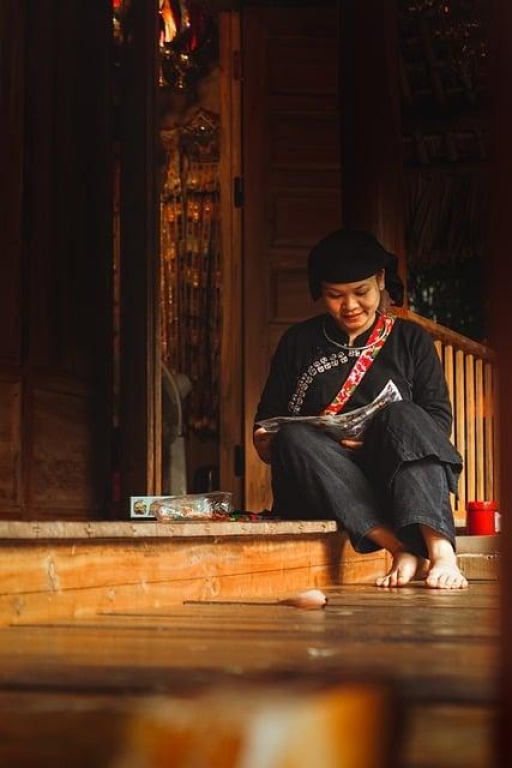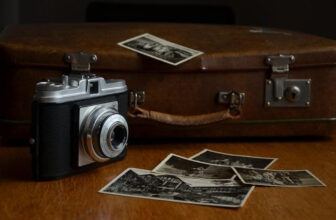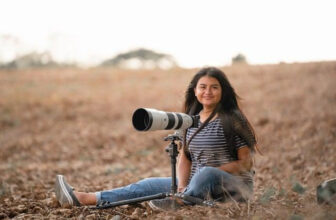Master the art of portrait photography with these expert tips
GoogleAds

Portrait photography is a captivating art form that allows you to capture the essence and personality of your subject in a single frame. Whether you’re a seasoned pro or just starting out, mastering the art of portrait photography is a valuable skill that can elevate your work to new heights. In this article, we’ll explore some expert tips and techniques to help you sharpen your portrait photography skills and create stunning images that truly resonate with your audience. So grab your camera, adjust your settings, and let’s dive into the world of portrait photography together.
Understanding lighting techniques for portrait photography
When it comes to capturing stunning portraits, understanding lighting techniques is crucial. Proper lighting can make or break a portrait, highlighting the subject’s features and setting the mood for the photo. By mastering different lighting techniques, you can take your portrait photography to the next level.
One key lighting technique to master is the use of natural light. Natural light can create soft, flattering light that enhances the subject’s features. When shooting outdoors, look for open shade or diffused light to avoid harsh shadows. Consider the time of day as well, with the golden hour just after sunrise or before sunset providing beautiful, warm light.
Another important lighting technique to master is artificial lighting. Studio lights can provide more control over the lighting environment, allowing you to create dramatic effects. Experiment with different types of artificial lighting, such as softboxes, umbrellas, and ring lights, to see which works best for your portraits.
Using reflectors can also enhance your portrait photography. Reflectors bounce light back onto the subject, filling in shadows and creating a more even lighting setup. Silver reflectors can create a cooler light, while gold reflectors add warmth to the image. Position reflectors strategically to achieve the desired effect.
Lastly, don’t be afraid to experiment with creative lighting techniques. Consider using colored gels to add a pop of color to your portraits or playing with unusual light sources for a unique look. Remember, practice makes perfect, so don’t hesitate to try new techniques and see what works best for your style of portrait photography.

Selecting the best location for capturing stunning portraits
When it comes to capturing stunning portraits, selecting the best location is key. The right setting can enhance the mood of the photo, complement the subject, and add depth to the composition. Here are some expert tips to help you master the art of portrait photography by choosing the perfect location:
Consider the lighting: Natural light can make a huge difference in the quality of your portraits. Look for locations with soft, diffused light, such as open shade or overcast skies. Avoid harsh midday sun, which can create unflattering shadows on your subject’s face.
Think about the background: A cluttered or distracting background can take away from the beauty of your subject. Choose locations with simple, clean backdrops that won’t compete with the person you’re photographing. Consider using walls, fences, or natural elements like trees or water as a backdrop.
Take advantage of interesting textures: Textures can add visual interest and dimension to your portraits. Look for locations with textured walls, interesting architecture, or natural elements like rocks or sand. These textures can help create a unique and eye-catching portrait.
| Location: | Urban alleyway |
| Texture: | Brick walls |
Consider the season: Different seasons can offer unique opportunities for portrait photography. In the spring, you might find blooming flowers or green landscapes. In the fall, you can capture the colors of changing leaves. Consider the season when selecting your location for portraits.
Experiment with different perspectives: Don’t be afraid to get creative with your portrait locations. Try shooting from high above or down low to create interesting angles and compositions. By experimenting with different perspectives, you can elevate your portrait photography to the next level.

Utilizing composition techniques to enhance your portraits
When it comes to portrait photography, mastering composition techniques can truly take your photos to the next level. By utilizing various composition rules and guidelines, you can enhance the visual impact of your portraits and create more dynamic and engaging images.
One important composition technique to keep in mind is the rule of thirds. This rule divides your frame into nine equal parts using two horizontal and two vertical lines. By placing your subject off-center at one of the intersecting points, you can create a more visually appealing composition.
Leading lines are another powerful composition technique to consider when shooting portraits. These lines can direct the viewer’s eye towards the subject and add depth and interest to your photos. Look for natural lines in your environment, such as roads, fences, or even shadows, to incorporate into your compositions.
Using framing in your portraits can also help draw attention to your subject. Whether it’s a doorway, window, or even foliage, framing can help create a sense of depth and add context to your images. Experiment with different framing elements to see how they can enhance your portraits.
Lastly, don’t be afraid to play with perspective in your portrait photography. By changing your vantage point or shooting angle, you can add a unique and creative touch to your images. Whether you’re shooting from a low angle to make your subject appear taller or from above for a different perspective, perspective can greatly impact the mood and storytelling of your portraits.

Building rapport with your subjects for natural and authentic portraits
When it comes to portrait photography, building rapport with your subjects is key to capturing natural and authentic moments. Establishing a connection with the person in front of your lens can make all the difference in the final image. Here are some expert tips to help you master the art of portrait photography.
1. Be Genuine: Show a genuine interest in your subject and make them feel comfortable in front of the camera. Engage in conversation, ask questions, and show empathy to create a relaxed atmosphere.
2. Find Common Ground: Look for common interests or experiences that you and your subject share. This can help break the ice and build a bond that will translate into the photos.
3. Use Non-verbal Communication: Sometimes words are not necessary to build rapport. Pay attention to your body language, tone of voice, and facial expressions to convey warmth and understanding.
| 4. Focus on: | What to Do: |
|---|---|
| Eye Contact | Make eye contact to establish a connection and show attentiveness. |
| Body Language | Keep an open and relaxed posture to signal approachability. |
5. Be Patient and Flexible: Building rapport takes time, so be patient and allow your subject to warm up to the camera. Be flexible and willing to adapt to their needs and preferences to create a comfortable environment.

Mastering posing techniques to flatter your subjects
Portrait photography is both an art and a science, requiring a deep understanding of lighting, composition, and most importantly, posing techniques. A skilled photographer knows how to bring out the best in their subjects, capturing their unique essence and personality in a single frame. With the right guidance and practice, anyone can master the art of posing and take their portrait photography to the next level.
One of the key elements to consider when posing your subjects is body language. Simple adjustments to the position of the head, shoulders, and hips can make a world of difference in how a person appears in a photograph. Encourage your subject to relax and feel comfortable in front of the camera, as this will help them project confidence and authenticity in their poses.
When it comes to posing couples or groups, balance and symmetry are essential. Pay attention to the spacing between individuals, as well as their relative heights and angles. By creating visually pleasing compositions, you can enhance the dynamic between your subjects and capture moments of connection and intimacy that will resonate with viewers.
Experiment with different angles and perspectives to find the most flattering poses for your subjects. Shooting from slightly above can elongate the neck and flatter facial features, while shooting from below can create a sense of drama and power. Don’t be afraid to get creative and try unconventional poses – sometimes the most striking images come from thinking outside the box.
Remember, practice makes perfect. Take the time to study the work of master photographers and analyze how they use posing techniques to create compelling portraits. By honing your skills and developing your own unique style, you can elevate your photography to new heights and capture the beauty and essence of your subjects like never before.
Utilizing editing software to enhance your portraits
When it comes to portrait photography, utilizing editing software can truly take your images to the next level. Whether you’re looking to enhance the colors, adjust the lighting, or remove any imperfections, editing software can help you achieve the perfect portrait.
One of the most important things to keep in mind when using editing software for portraits is to maintain the natural look of the subject. Avoid going overboard with filters and effects, as this can result in an unnatural and unflattering image. Instead, focus on subtle adjustments that enhance the natural beauty of the subject.
When editing portraits, it’s important to pay attention to details such as skin tone, blemishes, and lighting. Use tools like skin smoothing, blemish removal, and dodge and burn to create a flawless look. Additionally, make sure to adjust the lighting and color temperature to enhance the overall mood of the portrait.
Another useful tip when editing portraits is to pay attention to composition and framing. Cropping the image, adjusting the angle, and removing distractions can help draw attention to the subject and create a more impactful portrait. Experiment with different compositions to find the most visually appealing result.
| Tip | Example |
|---|---|
| Tip: Don’t over edit | Keep the edits subtle to maintain a natural look |
| Tip: Pay attention to details | Use tools like skin smoothing and dodge and burn for a flawless look |
 accessories to add interest to your portraits”>
accessories to add interest to your portraits”>
Incorporating props and accessories to add interest to your portraits
One way to elevate your portrait photography is by incorporating props and accessories to add interest and personality to your shots. Props can help tell a story, create a mood, or simply add a pop of color or texture to your portraits. From hats and scarves to books and flowers, the possibilities are endless when it comes to selecting the right props for your photoshoot.
When choosing props for your portraits, it’s important to consider the overall theme or message you want to convey. Are you going for a vintage look? Consider using old-fashioned props like a vintage camera or an antique chair. Want to add a touch of whimsy? Think about incorporating balloons or bubbles into your shots. The key is to select props that complement your subject and enhance the overall composition of the photograph.
In addition to props, accessories can also play a crucial role in adding interest to your portraits. From jewelry and sunglasses to hats and scarves, accessories can help define a subject’s personality and style. Consider asking your subject to bring along their favorite accessory or provide a few options for them to choose from during the photoshoot.
When incorporating props and accessories into your portraits, remember to keep it simple and avoid overcrowding the frame. Too many props or accessories can distract from the main subject and take away from the overall impact of the photo. Choose a few key props or accessories that enhance the theme of the shoot and complement your subject without overwhelming the composition.
Ultimately, incorporating props and accessories into your portraits is a fun and creative way to add depth and interest to your photography. Experiment with different props, accessories, and compositions to discover what works best for your style and vision. With a bit of practice and creativity, you can master the art of portrait photography and create stunning, compelling images that truly stand out.
Q&A
Q: Why is portrait photography considered an art form?
A: Portrait photography is considered an art form because it involves capturing the essence and personality of a subject through careful composition, lighting, and posing.
Q: What are some key tips for achieving great portrait shots?
A: Some key tips for achieving great portrait shots include finding good lighting, connecting with your subject, experimenting with different angles and perspectives, and paying attention to background elements.
Q: How important is editing in portrait photography?
A: Editing is an important aspect of portrait photography as it allows photographers to enhance and fine-tune their images, adjusting elements such as exposure, color balance, and contrast to create a polished final product.
Q: What are some common mistakes to avoid in portrait photography?
A: Some common mistakes to avoid in portrait photography include using harsh lighting, failing to establish a connection with your subject, neglecting to consider composition and framing, and over-editing photos.
Q: How can aspiring photographers improve their portrait photography skills?
A: Aspiring photographers can improve their portrait photography skills by practicing regularly, studying the work of accomplished photographers, seeking feedback from peers and mentors, and experimenting with different techniques and styles.
Closing Remarks
In conclusion, mastering the art of portrait photography takes time, practice, and patience. By following these expert tips, you can elevate your skills and capture stunning portraits that truly represent your subject in the best light. Remember to experiment with different techniques, poses, and lighting to create unique and memorable photographs. Keep pushing yourself to learn and grow as a photographer, and your portraits will continue to improve with each shot. Happy shooting!
GoogleAds







